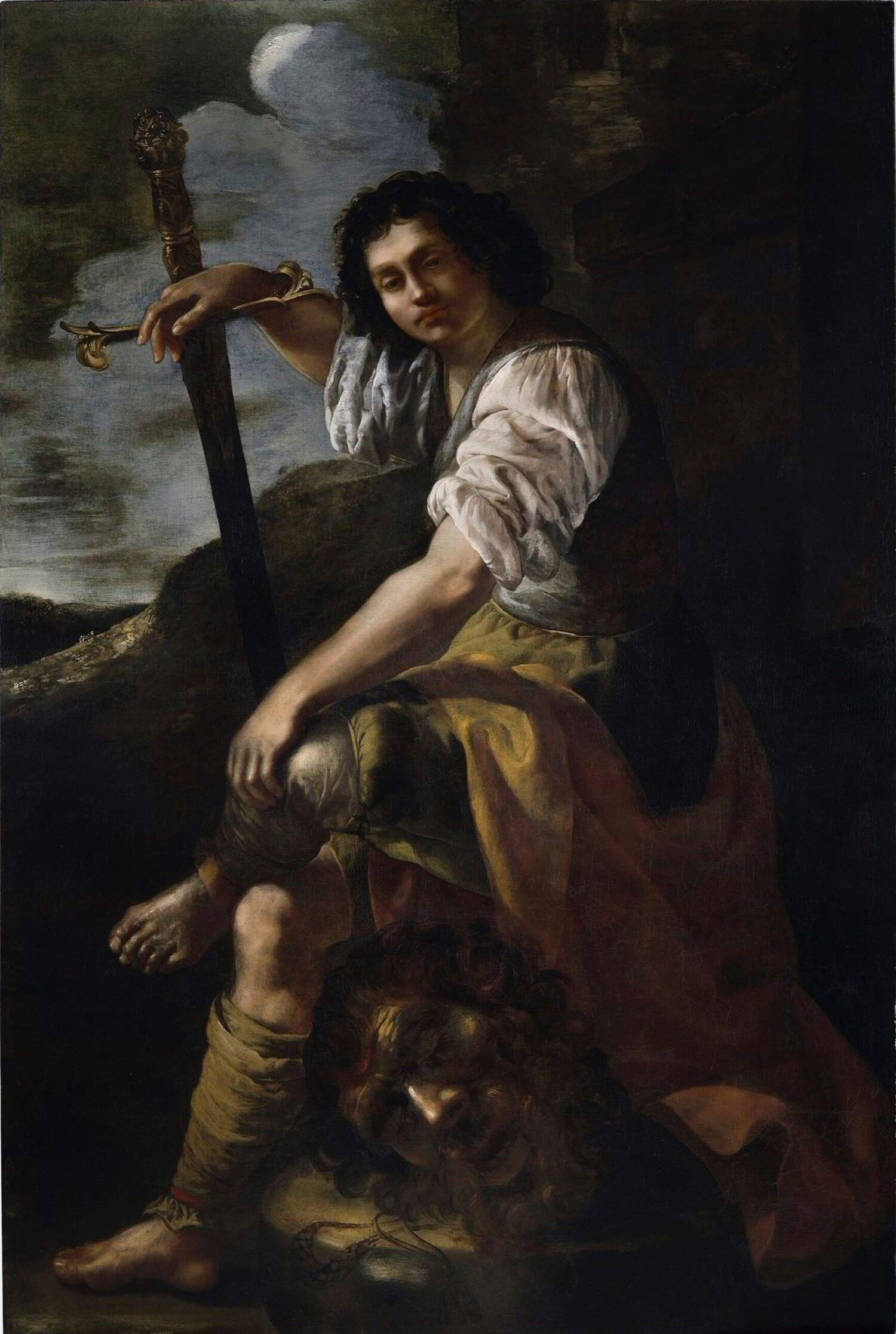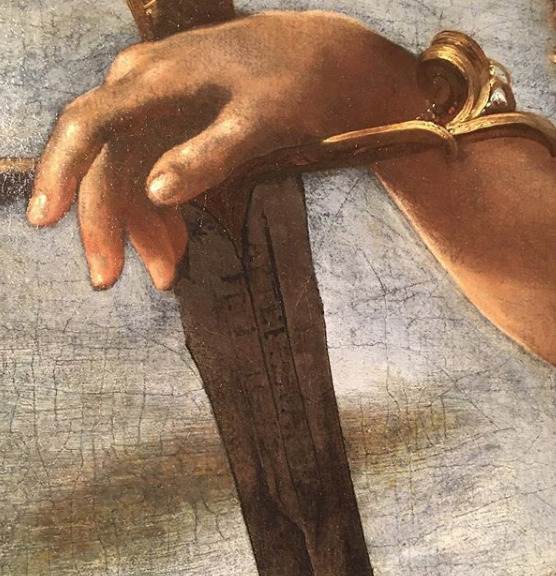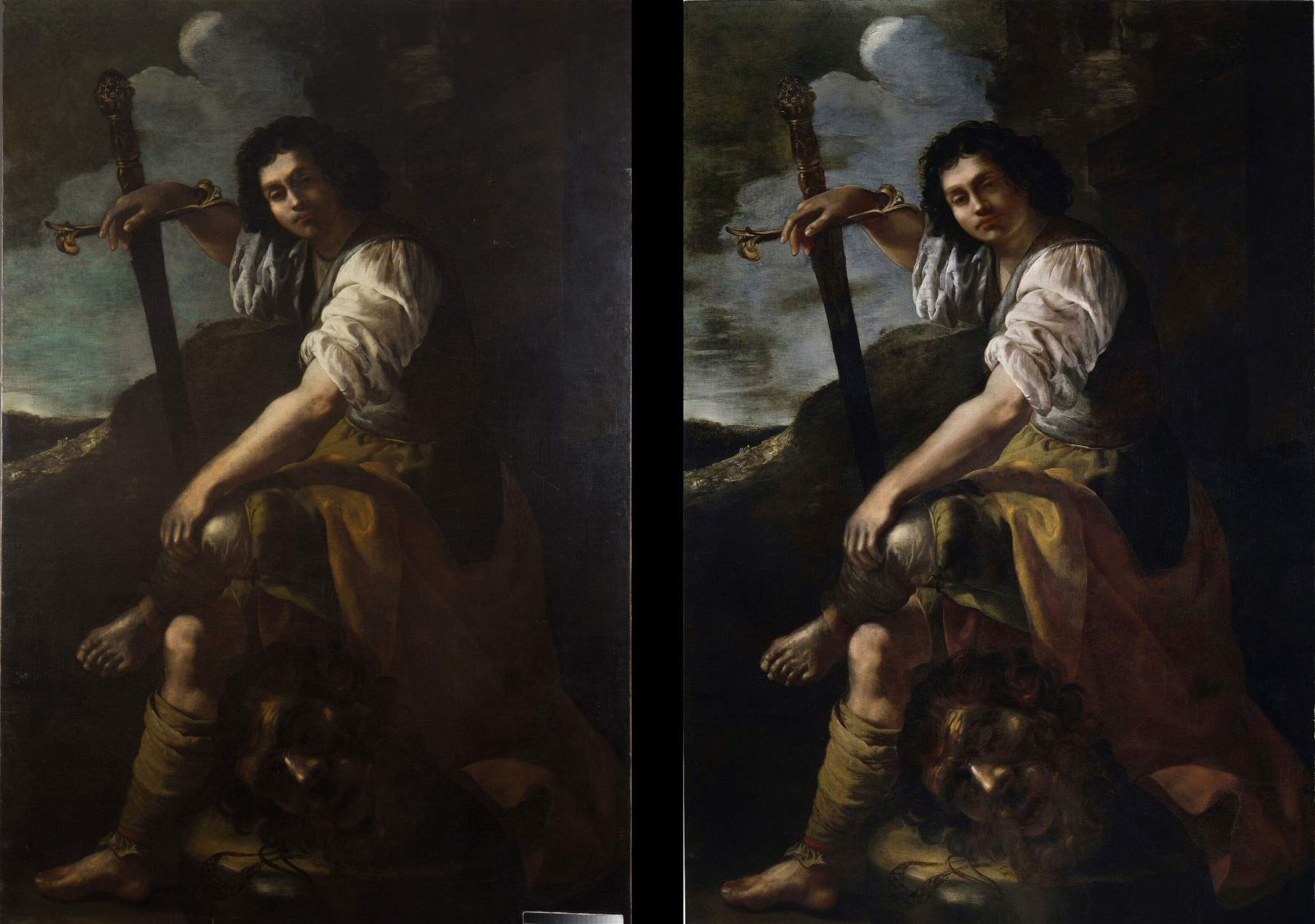A David and Goliath definitively and unquestioningly assigned to Artemisia Gentileschi seeks a museum to display it
As the National Gallery in London prepares to host the major exhibition on Artemisia Gentileschi (Rome, 1593 - Naples, 1654), there is also a painting by Artemisia in the English capital that is looking for a museum to display it: it is David and Goliath, the most recent discovery of the Tuscan-born painter, thanks to the work of Gianni Papi, Simon Gillespie and Tracey B. Chaplin, who illustrated the painting in an article by their signatures published in the latest issue of Burlington Magazine (March 2020). The painting is now at the studio of Gillespie, a restorer, who has subjected the work to a cleaning process that has allowed the discovery of Artemisia’s signature, placed on the biblical hero’s sword.
The work is owned by a private English collector who wishes to remain anonymous but would like to find a museum that can display the work. Reached by Artnet News magazine, he let it be known that “it would be wonderful if an appropriate public museum expressed interest in exhibiting the work.” The David and Goliath will not be in the National Gallery exhibition, however: the study assigning the work to Artemisia is in fact of too recent publication to allow the painting to enter the major London exhibition. But the work has nonetheless been known for some time, and the discovery published in the Burlington, Gillespie noted, was due largely to the intuition of Gianni Papi, who had recognized Artemisia’s hand even before the painting (which was dirty and with repainting) was restored.
 |
| Artemisia Gentileschi, David and Goliath (c. 1639; oil on canvas, 201 x 133 cm; Private collection) |
 |
| The signature on David’s sword |
The David and Goliath, which dates from around 1639 (thus most likely from the artist’s English sojourn) had been purchased by the current owner in December 2018, passed at auction by the Hampel Fine Art house in Munich and fetched 103,000 euros (a real bargain for the collector, since recently paintings by Artemisia Gentileschi, obviously recognized as such before the sale, have passed at auction at figures as high as 40-50 times higher): at the time, on the other hand, the work went to auction as “attributed to Artemisia Gentileschi,” with only one bibliographical reference, namely an article in the 1996 journal Nuovi studi by Gianni Papi himself, who had formulated his attribution based solely on an old black-and-white, and very poor quality, photograph of the work (which first appeared on the market in London in the 1970s, with attribution to Giovanni Francesco Guerrieri). We do not know what turns the canvas has taken since then: we only know that in 2018 it returned to the market in Germany. It was the current owner who took the painting to Simon Gillespie’s studio to have it analyzed and cleaned.
Artemisia’s painting is very close to a David and Goliath counterpart painted in the 1720s by Domenico Fetti (Rome, 1588-Venice, 1623), now in the Nationalmuseum in Stockholm: evidently Artemisia knew it because it reproduces the same layout. As Papi noted, there are many aspects that point to a work executed by Artemisia between the 1530s and the 1640s, especially the colors: in fact, the ochre of David’s robe is typical of Artemisia’s paintings executed in this period (theAllegory of Painting at Palazzo Barberini, made in the 1530s, is an example). And again, David’s sleeves recall fabrics that appear in other Artemisia works of the period, and the same can be said of the way the light illuminates the protagonist’s face (reminiscent of that inEsther and Ahasuerus), as well as the cloudy sky. Also according to Papi, the David and Goliath would be the one mentioned in 18th-century sources about the collections of King Charles I of England (the great writer Horace Walpole, for example, had written that “King Charles has many paintings by Artemisia and his favorite is a David with the head of Goliath”). There is also another version of the painting, which went to auction at Dorotheum in 2019, but it appears to be attributed only to Artemisia (we have no certainty that she is the author).
A work of the highest quality, it has been restored to full legibility after Gillespie’s intervention, which, as mentioned, also allowed the discovery of the signature, which was covered by a layer of blurred varnish and repainting. A date also appears next to the signature, although the last two digits are illegible. “Finding the signature during the removal of the repainting,” said Simon Gillespie, “was something wonderful. This discovery underscores the importance of conservation practice in supporting the conclusions of art historians.”
Pictured below: the painting before and after restoration.
 |
| A David and Goliath definitively and unquestioningly assigned to Artemisia Gentileschi seeks a museum to display it |
Warning: the translation into English of the original Italian article was created using automatic tools. We undertake to review all articles, but we do not guarantee the total absence of inaccuracies in the translation due to the program. You can find the original by clicking on the ITA button. If you find any mistake,please contact us.




























